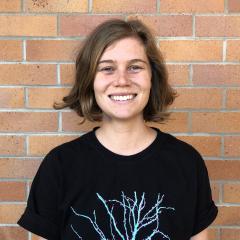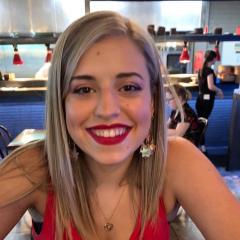In the Scott Lab, we are interested in the workings of the brain at the level of cells and circuits.
We aim to understand how sensory stimuli are perceived and processed in the brain, and how the brain then interprets these stimuli to produce adaptive behaviours.
Because of the brain’s extraordinary complexity, these questions are difficult to address by looking at individual cells. The flow of information through the brain relies on the coordinated activity of thousands or millions of cells, and on ensembles of neurons that are active simultaneously. For this reason, our research involves imaging activity in thousands of cells, and seeking salient patterns of activity across these populations. In a range of projects, we characterise the neurons and circuits that respond to various visual, auditory, water flow, and vestibular stimuli; that play a role in the integration of information from these modalities; and that filter sensory information to produce behaviour.
We work in the zebrafish model system because of its strengths in genetics, behaviour, microscopy, and optogenetics. Specifically, we use transgenic techniques to express genetically encoded calcium indicators (GECIs) or optogenetic proteins in specific parts of the zebrafish brain. We then use selective plane illumination microscopy (SPIM) to observe the GECIs, which reveal activity across our cells and circuits. We also use optical physics to produce holograms in the brain for optogenetics in our larval fish. Gradually, we aim to transition from describing patterns of activity in the brain to manipulating them in targeted ways, and to describing the structures and connectivity of the neurons carrying the information. This will contribute to a comprehensive understanding of brain function spanning cells, circuits, regions, and the brain as a whole. A detailed review of these approaches can be found here.
Group leader

Professor Ethan Scott
Group Leader, Neural circuits and behaviour
+61 7 334 69471
ethan.scott@uq.edu.au
UQ Researcher Profile
Our group was originally founded on expertise in genetics, and especially transgenic technologies that can be used for the targeted expression of protein tools. In the past, we have used these genetic approaches to drive cell markers, fluorescent calcium indicators, and optogenetic tools throughout the nervous system of larval zebrafish, and this has led to our more recent focus on circuits and network neuroscience. The group’s approaches span optical physics, microscope design, optogenetics, behavioural analysis, and the mathematical modelling of neural networks. Along the way, we have developed some level of expertise across all of these disciplines, although the group still relies on specialist collaborators for our most challenging physics and modelling challenges. Overall, the group’s expertise spans:
- Methods for targeted expression of transgenes
- Light-sheet microscopy
- Light sculpting and optogenetics
- Optical trapping in vivo
- Sensory neurobiology
- The analysis of circuit- and network-level sensory processing
- Zebrafish models of sensory processing for autism spectrum disorder
Brain-wide sensory networks
We have investigated whole-brain neuronal responses in vivo at the cellular level to a range of sensory stimuli. This has enabled insight into the neuronal networks that enable zebrafish to process visual stimuli (Thompson et al 2016), auditory stimuli (Vanwalleghem et al. 2017, Poulsen et al. 2020), vestibular stimuli (Favre-Bulle et al. 2018) and water flow (Vanwalleghem et al. 2020).
Changes in sensory networks occurring in models of autism spectrum disorder
We have found the fmr1 model of autism spectrum disorder and fragile X syndrome exhibits differences in processing sensory information. Notably, zebrafish carrying the fmr1 mutation show differences in adaptive correlations between neuronal activity in the visual processing system during habituation, leading to slower habituation to visual stimuli (Marquez-Legoretta et al. 2019). We have also found increased transmission and reduced filtering in the auditory processing pathway in the fmr1 fish, leading to an auditory hypersensitivity phenotype which resembles that seen in humans with the fmr1 mutation (Constantin et al. 2019).
Optical trapping in vivo
Using optical trapping (focussed light to move objects), we have manipulated the otoliths (ear stones) of zebrafish in order to produce a fictive vestibular stimulus. This technique has allowed us to investigate the vestibular system of the fish while maintaining the brain motionless under the microscope objective. This has enabled us to characterize the vestibular processing network, and responses to stimulation of the right and left otoliths separately and together (Favre-Bulle et al. 2017 and 2018).
Visual pathways during escape behaviour
We uncovered the neural mechanisms underlying the escape response elicited by visual loom stimuli using several methods to give an in-depth understanding of functional connectivity in the network. We used fluorescent labelling to map neuronal projections between the thalamus and the tectum and characterised the activity of thalamic neurons with fluorescent calcium indicators. We then ablated the thalamo-tectal pathway in order to confirm its importance in generating escape responses to looms (Heap et al. 2018). We have also described the brain-wide patterns of activity that accompany habituation to visual looming stimuli, and have modelled the neural networks that perform this important form of sensory learning (Marquez-Legorreta et al, 2019)
Our lab spans numerous experimental approaches and techniques, and as a result, we need all kinds of expertise. The core of our lab comprises neuroscientists with interests including developmental neuroscience, circuit function, and behaviour, and we are always looking to add motivated researchers of this type. Increasingly, experience with coding (Matlab and Python) is desirable, but for the right candidate, this can be learned after arriving in the lab.
The intricate sensory stimuli that we present during our whole-brain imaging are incompatible with off-the-shelf SPIM microscopes, and our optical physics approaches require flexible access to the light paths. This means that we build our microscopes from the ground up, customised to our needs and to the particular experiments that we are doing at the time. This vastly increases our experimental capacities, but it also means that we need capable optical physicists on the team. Our optical physicists build and maintain our SPIM scopes to produce stripe-free light-sheet images (Taylor et al, 2018), and use them for physics-based techniques including holographic illumination for optogenetics (Favre-Bulle et al, 2015) and optical trapping for vestibular stimulation (Favre-Bulle et al, 2017 and 2018). We are always looking for ways to expand and improve our optical physics approaches, and are eager to recruit skilled physicists to our team.
With our SPIM microscopes, we produce vast datasets containing activity from hundreds of thousands or millions of neurons. This leaves us with a great need for people who can code solutions for image analysis, data mining, and the detection of salient patterns among these vast data. Our mathematical and neuroinformatic approaches have grown more sophisticated over the years (see the progression from Thompson et al, 2016 to Vanwalleghem et al, 2017, Favre-Bulle et al, 2018, and Marquez-Legorreta et al, 2019), but we are constantly seeking new and better ways to make sense of brain-wide neural function from a computational standpoint. We welcome applications from researchers interested in explaining neural activity mathematically or in developing testable mathematical models for sensory processing.
Positions are available across our research program for undergraduates, honours students, PhD students, and postdocs, and we are happy to entertain new ideas. If you are interested in joining the lab, please contact Ethan, providing a CV and ideas for the type of project that you would like to carry out.
-
G. Vanwalleghem, L. Constantin and E. K. Scott (2021). Calcium Imaging and the Curse of Negativity. Frontiers in Neural Circuits 14.https://doi.org/10.3389/fncir.2020.607391
-
E. S. Wong, D. Zheng, S. Z. Tan, N. L. Bower, V. Garside, G. Vanwalleghem, F. Gaiti, E. Scott, B. M. Hogan, K. Kikuchi, E. McGlinn, M. Francois and B. M. Degnan (2020). Deep conservation of the enhancer regulatory code in animals. Science 370.https://www.ncbi.nlm.nih.gov/pubmed/33154111
-
G. Vanwalleghem, K. Schuster, M. A. Taylor, I. A. Favre-Bulle and E. K. Scott (2020). Brain-Wide Mapping of Water Flow Perception in Zebrafish. J Neurosci 40, 4130-4144.https://www.ncbi.nlm.nih.gov/pubmed/32277044
-
A. J. Stevenson, G. Vanwalleghem, T. A. Stewart, N. D. Condon, B. Lloyd-Lewis, N. Marino, J. W. Putney, E. K. Scott, A. D. Ewing and F. M. Davis (2020). Multiscale imaging of basal cell dynamics in the functionally mature mammary gland. Proc Natl Acad Sci U S A 117, 26822-26832.https://www.ncbi.nlm.nih.gov/pubmed/33033227
-
E. Scott (2020). Brain states behind exploring and hunting revealed. Nature 577, 175-176.https://www.ncbi.nlm.nih.gov/pubmed/31911680
-
I. C. D. Lenton, E. K. Scott, H. Rubinsztein-Dunlop and I. A. Favre-Bulle (2020). Optical Tweezers Exploring Neuroscience. Front Bioeng Biotechnol 8, 602797.https://www.ncbi.nlm.nih.gov/pubmed/33330435
-
I. A. Favre-Bulle, M. A. Taylor, E. Marquez-Legorreta, G. Vanwalleghem, R. E. Poulsen, H. Rubinsztein-Dunlop and E. K. Scott (2020). Sound generation in zebrafish with Bio-Opto-Acoustics. Nat Commun 11, 6120.https://www.ncbi.nlm.nih.gov/pubmed/33257652
-
L. Constantin, R. E. Poulsen, L. A. Scholz, I. A. Favre-Bulle, M. A. Taylor, B. Sun, G. J. Goodhill, G. C. Vanwalleghem and E. K. Scott (2020). Altered brain-wide auditory networks in a zebrafish model of fragile X syndrome. BMC Biol 18, 125.https://www.ncbi.nlm.nih.gov/pubmed/32938458
-
M. Pavez, A. C. Thompson, H. J. Arnott, C. B. Mitchell, I. D'Atri, E. K. Don, J. K. Chilton, E. K. Scott, J. Y. Lin, K. M. Young, R. J. Gasperini and L. Foa (2019). STIM1 Is Required for Remodeling of the Endoplasmic Reticulum and Microtubule Cytoskeleton in Steering Growth Cones. J Neurosci 39, 5095-5114.https://www.ncbi.nlm.nih.gov/pubmed/31023836
-
I. A. Favre-Bulle, A. B. Stilgoe, E. K. Scott and H. Rubinsztein-Dunlop (2019). Optical trapping in vivo: theory, practice, and applications. Nanophotonics 8, 1023-1040.https://doi.org/10.1515/nanoph-2019-0055
-
G. C. Vanwalleghem, M. B. Ahrens and E. K. Scott (2018). Integrative whole-brain neuroscience in larval zebrafish. Curr Opin Neurobiol 50, 136-145.https://www.ncbi.nlm.nih.gov/pubmed/29486425
-
M. A. Taylor, G. C. Vanwalleghem, I. A. Favre-Bulle and E. K. Scott (2018). Diffuse light-sheet microscopy for stripe-free calcium imaging of neural populations. J Biophotonics 11, e201800088.https://www.ncbi.nlm.nih.gov/pubmed/29920963
-
L. A. L. Heap, G. Vanwalleghem, A. W. Thompson, I. A. Favre-Bulle and E. K. Scott (2018). Luminance Changes Drive Directional Startle through a Thalamic Pathway. Neuron 99, 293-301 e294.https://www.ncbi.nlm.nih.gov/pubmed/29983325
-
L. A. Heap, G. C. Vanwalleghem, A. W. Thompson, I. Favre-Bulle, H. Rubinsztein-Dunlop and E. K. Scott (2018). Hypothalamic Projections to the Optic Tectum in Larval Zebrafish. Frontiers in Neuroanatomy 11.https://doi.org/10.3389/fnana.2017.00135
-
I. A. Favre-Bulle, G. Vanwalleghem, M. A. Taylor, H. Rubinsztein-Dunlop and E. K. Scott (2018). Cellular-Resolution Imaging of Vestibular Processing across the Larval Zebrafish Brain. Curr Biol 28, 3711-3722 e3713.https://www.ncbi.nlm.nih.gov/pubmed/30449665
-
G. Vanwalleghem, L. A. Heap and E. K. Scott (2017). A profile of auditory-responsive neurons in the larval zebrafish brain. J Comp Neurol 525, 3031-3043.https://www.ncbi.nlm.nih.gov/pubmed/28599354
-
I. A. Favre-Bulle, A. B. Stilgoe, H. Rubinsztein-Dunlop and E. K. Scott (2017). Optical trapping of otoliths drives vestibular behaviours in larval zebrafish. Nat Commun 8, 630.https://www.ncbi.nlm.nih.gov/pubmed/28931814
-
L. Avitan, Z. Pujic, J. Molter, M. Van De Poll, B. Sun, H. Teng, R. Amor, E. K. Scott and G. J. Goodhill (2017). Spontaneous Activity in the Zebrafish Tectum Reorganizes over Development and Is Influenced by Visual Experience. Curr Biol 27, 2407-2419 e2404.https://www.ncbi.nlm.nih.gov/pubmed/28781054
-
A. W. Thompson, G. C. Vanwalleghem, L. A. Heap and E. K. Scott (2016). Functional Profiles of Visual-, Auditory-, and Water Flow-Responsive Neurons in the Zebrafish Tectum. Curr Biol 26, 743-754.http://www.ncbi.nlm.nih.gov/pubmed/26923787
-
A. W. Thompson and E. K. Scott (2016). Characterisation of sensitivity and orientation tuning for visually responsive ensembles in the zebrafish tectum. Sci Rep 6, 34887.https://www.ncbi.nlm.nih.gov/pubmed/27713561
-
K. Chalmers, E. M. Kita, E. K. Scott and G. J. Goodhill (2016). Quantitative Analysis of Axonal Branch Dynamics in the Developing Nervous System. PLoS Comput Biol 12, e1004813.http://www.ncbi.nlm.nih.gov/pubmed/26998842
-
L. Avitan, Z. Pujic, N. J. Hughes, E. K. Scott and G. J. Goodhill (2016). Limitations of Neural Map Topography for Decoding Spatial Information. Journal of Neuroscience 36, 5385-5396.https://www.jneurosci.org/content/36/19/5385
-
E. M. Kita, E. K. Scott and G. J. Goodhill (2015). Topographic wiring of the retinotectal connection in zebrafish. Dev Neurobiol 75, 542-556.http://www.ncbi.nlm.nih.gov/pubmed/25492632
-
E. M. Kita, E. K. Scott and G. J. Goodhill (2015). The influence of activity on axon pathfinding in the optic tectum. Dev Neurobiol 75, 608-620.http://www.ncbi.nlm.nih.gov/pubmed/25556913
-
J. H. Hines, A. M. Ravanelli, R. Schwindt, E. K. Scott and B. Appel (2015). Neuronal activity biases axon selection for myelination in vivo. Nat Neurosci 18, 683-689.http://www.ncbi.nlm.nih.gov/pubmed/25849987
-
G. J. Goodhill, R. A. Faville, D. J. Sutherland, B. A. Bicknell, A. W. Thompson, Z. Pujic, B. Sun, E. M. Kita and E. K. Scott (2015). The dynamics of growth cone morphology. BMC Biol 13, 10.http://www.ncbi.nlm.nih.gov/pubmed/25729914
-
I. A. Favre-Bulle, D. Preece, T. A. Nieminen, L. A. Heap, E. K. Scott and H. Rubinsztein-Dunlop (2015). Scattering of Sculpted Light in Intact Brain Tissue, with implications for Optogenetics. Scientific Reports 5.https://www.nature.com/articles/srep11501.pdf
Optical Physics in Neuroscience Team - WINNER, 2018 Australian Museum Eureka Award
Aims to achieve
From a broad perspective, this work is part of a burgeoning field of circuits neuroscience. Over the coming decades, neuroscientists will make the leap from understanding how regions of the brain function to describing, in concrete terms, the cellular circuits that underlie perception and behaviour. Our group hopes to contribute to this effort, specifically in describing how the senses work, how the brain produces a coherent representation of the outside world, and how information from the outside world is translated into appropriate actions.
Research Areas
- Sensory processing and integration
- Calcium imaging and optogenetics
- Biophotonics
- Computational neuroscience
Alumni
- Andrew Thompson
- Celine Santiago
- Chi Ching Goh
- Harrison Wood
- Isabel Formella
- Jamie Wyatt
- Kerri Gillespie
- Kevin Schuster
- Lucy Heap
- Marion Monet
- May Zhang
- Michael Troupe
- Morghan Lucas
- Neha Hebbani
- Phil McClenahan
- Rebecca Dunning
- Robert Quinn
- Taaibos Human
- Victoria McGuire








